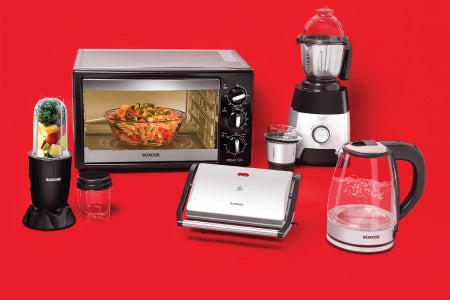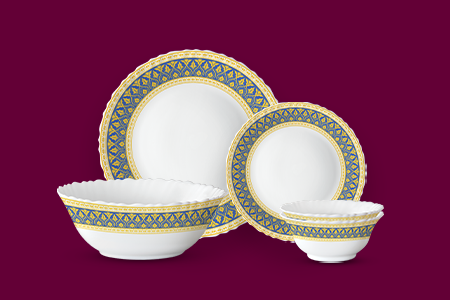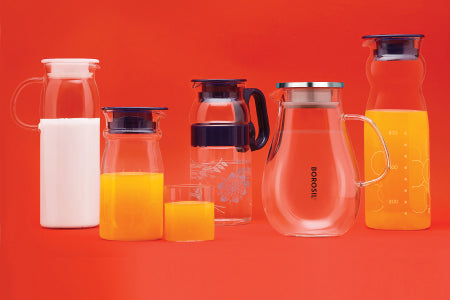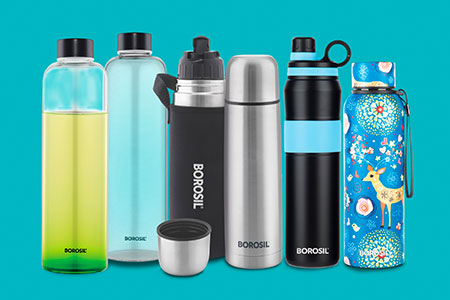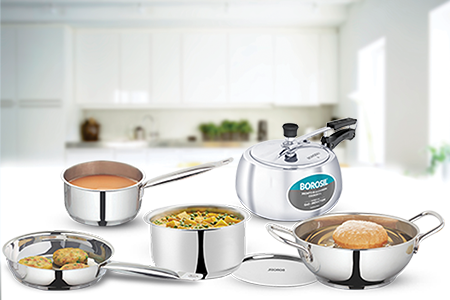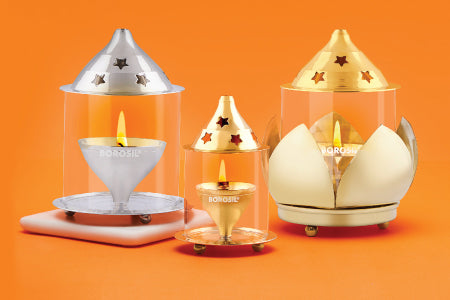
Ultimate Room Heater Buying Guide
The colder weather has begun to kick in. It's the perfect time to snuggle in with a luscious Chai Hot Chocolate. It's a season for indulgence and comfort, where each sip seems to push back against the cold embrace outside. Yet, as delightful as this ritual is, you can bring an additional layer of warmth into your home. Have you wondered what could make this winter more warm and toasty? A room heater! Adjust your room to your preferred temperature and enjoy winter in the comfort of your home.
You can create your own cocoon of warmth amidst the winter's chill. The gentle heat from the oil-filled radiator becomes a silent guardian, warding off the cold and keeping you snug and content. However, venturing into the realm of room heaters requires some careful considerations. Not all oil-filled radiators are created equal, and choosing the right one involves a blend of practicality and informed decision-making.
So, if you're looking to buy an Oil Filled Radiator/Room Heater, there are some things you should know to look for to make the right purchase. So, we have curated this room heater buying guide to help you make informed decisions.
How do Oil Filled Radiators (OFR) work?
OFRs function using thermal fluid technology, making them a cornerstone of efficient and comfortable room heating. Here's a closer look at how these devices work and why they've become a popular choice for combating the cold:
- They have a metal body and contain a heating element, especially within a heat transfer fluid. The fluid consists of oil, which is where OFRs get their name.
- The convenience of mobility is a standout feature of most OFRs. Thanks to the inclusion of caster wheels, moving these devices becomes a breeze. Most OFRs have caster wheels, which help you move the device easily to your desired location without worrying about how heavy they are.
- Another advantageous characteristic of OFRs is their straightforward setup. OFRs are mains-powered, meaning you don't need to fret about power connections. You can easily plug them into any power outlet, and they're ready for use!
- Here's where the magic truly happens! The heat transfer fluid within the radiator stores heat and gradually releases it. This means that your OFR will continue to have a heat output even after being switched off, providing a sustained level of warmth that lingers in the room.
- OFRs have many curves alongside their cavities which provide a larger surface area. This allows more air to contact the radiator for optimal thermal transfer and heating power. As a result, the radiator can radiate heat more effectively, warming up your space swiftly.
- OFRs work by both convection and radiation to release a gentle form of heating that provides a comfortable ambient temperature. The heated fluid circulates through convection within the radiator, generating warm currents that rise and circulate cool air downwards to be reheated. Meanwhile, radiation involves the radiator emitting infrared heat waves that directly warm objects and surfaces in its vicinity, creating a comfortable ambient temperature that envelopes the room.
In essence, Oil-filled Radiators blend cutting-edge engineering with user-friendly design, providing a balanced and gentle form of heating. The fusion of their thermal fluid technology, mobility, and efficient heat distribution via convection and radiation makes OFRs a reliable choice for maintaining a cosy environment during winter.
How to use an Oil Filled Radiator?
Our aim in designing this room heater buying guide is to help you learn everything about OFRs. So, we will also discuss how to use OFRs.
As previously stated, they generate a comfortable ambient temperature but are still quite energy-intensive. Hence, it's recommended to use them as space heaters rather than as a sole heating source. Used in small spaces or as an assistant to your main heating system, is ideal for OFRs. Their caster wheels also make OFRs an excellent portable device. Here are some additional methods on how to use them:
-
Supplementary Use:
Instead of relying solely on Oil Filled Radiators (OFRs) to heat large spaces, use them as supplemental heaters for targeted warmth in specific areas. This approach is more energy-efficient and enhances comfort.
-
Zone Heating:
Position your OFR strategically where you need warmth, like your work area or seating spot. By focusing on the heat, you save energy and maintain comfort.
-
Temperature Control:
Adjust the OFR's thermostat settings to find a comfortable temperature without overheating the room. Avoid wasteful energy use.
-
Timed Heating:
Utilize built-in timers to schedule when your OFR turns on and off. It conserves energy and ensures heating when you need it.
-
Energy Management:
Save energy by turning off the OFR when you leave the room. Although it continues emitting residual heat, manual shut-off is important.
-
Portability Advantage:
Take advantage of caster wheels on many OFRs for easy movement. It lets you tailor comfort as you move around your home.
-
Safety Focus:
Prioritize safety by keeping flammable items away, placing the OFR on a stable surface, and avoiding draping anything over the heater.
What to understand about OFR design and power wattage?
Understanding an OFR's design and power wattage (OFR) can significantly impact its performance and efficiency. Here's a breakdown of key design considerations and how to select the appropriate power wattage for your needs:
Design and Surface Area:
The number of curves, known as fins, on each side of an OFR indicates its surface area. No matter what the power is, the more curves (known as fins) that a radiator has on each side indicate that the OFR has a larger surface area. As previously explained, larger surface areas will result in higher heat output. Increased surface area leads to better contact with air, resulting in improved heating efficiency.
Remember that larger OFRs with more fins are particularly effective in more spacious rooms, where their enhanced heat output can cover a larger area. In simpler terms,
More surface area = more contact with air = higher efficiency.
#BorosilTip: Larger radiators will perform better in bigger more spacious rooms.
Choosing Power Wattage:
To ensure optimal heating comfort, it's crucial to match the power wattage of the OFR to the characteristics of your living space. Follow this simple formula to choose the correct power wattage for your home:
- 100 W / m²:
This ratio is ideal for creating a pleasantly warm environment. Use this guideline when you want consistent and comfortable heating throughout your space.
- 60 W / m²:
If your home is well-insulated, you can opt for a lower power wattage. This ratio is suitable for maintaining warmth in homes with efficient insulation.
Considering the design's impact on heat distribution and the appropriate power wattage ensures that your OFR operates efficiently and effectively, providing the desired comfort level in your living spaces.
What features and accessories do OFRs have?
OFRs have several beneficial features. Let’s explore them here.
-
Wheels:
Select models that come with caster wheels. OFRs are quite heavy, and these wheels help to easily move them around, making it effortless to move the OFR to different spots for optimal heating distribution.
-
Carrying handle:
These are especially important. They assist in handling the OFRs since they are heavy. These handles offer a secure grip for safely moving the heater.
-
Tilt protection:
It stabilizes your radiator and prevents it from falling over. This stability-enhancing feature ensures that the heater remains upright, reducing the risk of accidents.
-
Adjustable heating power:
If you want to adjust the temperature, opt for models with this feature. They give you control over the level of warmth emitted by the OFR. This feature is valuable for tailoring the heating output to match your comfort preferences and the room's requirements.
-
Overheat protection:
This feature ensures safety by turning off the OFR if it gets too hot. This safeguard prevents overheating-related issues and enhances overall safety.
-
Screen display:
A useful visual representation to easily change modes and settings with ease. It enhances convenience by offering a clear visual representation of your choices.
-
Control lock:
The control lock prevents unintended adjustments and ensures that the OFR operates as intended. It prevents any danger to young kids.
-
Programming:
Some models have several programming options. It includes setting specific heating schedules, making it possible to turn the OFR on and off according to your daily routine.
-
Electric thermostat:
Provides more precision than electromechanical devices. With this feature, you can maintain your desired comfort level.
-
Humidity control:
This feature allows you to adjust the moisture level in the air (convection heating tends to dry the air slightly). You can maintain a balanced indoor environment.
-
Cord winder:
A cord winder is handy for discreetly winding up your power cables. It keeps the cord neatly wrapped when the OFR is not used, minimizing clutter.
-
Extension cable:
For added convenience, some OFRs come with extension cables. These longer cables allow you to reach farther sockets!
-
Timer:
Timers are particularly useful for night usage. The timers can be used to switch off your radiator at set times (can also be replaced by a programmer). It ensures efficient energy use and overnight comfort.
-
Design:
The traditional design seems unchanged, but now it's also offered in different colours!
Understanding and utilising these features and accessories can enhance your Oil Filled Radiator's usability, safety, and efficiency, making it a versatile and reliable heating solution.
OFR warranties, maintenance and prices!
OFRs are sturdy products, so they usually come with long warranties. The longer the warranty, the higher the guarantee of a reliable product. It's still important to watch out for any changes or inefficiencies and act accordingly. OFRs need next to no maintenance. But if you notice any leakage, immediately turn off your device and contact your manufacturer. Also, dust your radiator once a month, as dust can lead to energy loss and odour.
Conclusion
In conclusion, when purchasing an oil-filled radiator (OFR), a blend of thoughtful considerations can lead you to an investment that promises comfort, efficiency, and safety. Usually, radiators are reasonably priced. They are the most inexpensive heating devices on the market! You can read this space heater buying guide and sort through all your requirements before purchasing cost-effectively.
Kettles are another handy-heating appliance. Click here to learn more about how to clean kettles the right way.
Frequently Asked Questions
- What is the benefit of using an OFR heater?
OFR heaters excel in energy efficiency by utilising oil as a heat distributor rather than a fuel, effectively warming larger spaces and automatically powering off once the desired warmth is reached, leading to energy savings. For more information, refer to the heater buying guide to better understand its functionality and usage.
- Does OFR heaters burn oxygen?
No, they don't. Oil-filled room heaters are healthy for newborns as they don't deplete oxygen or moisture, ensuring no suffocation, dryness, or skin irritations. Contrary to misconception, these heaters don't involve oil burning.
- Which oil is best for OFR heaters?
Mineral oil or diathermic oil are best for OFR heaters. These oils have high thermal stability and help efficiently transfer and distribute heat within the heater. It's essential to use the oil the manufacturer recommends to ensure the safe and effective operation of your OFR heater.

